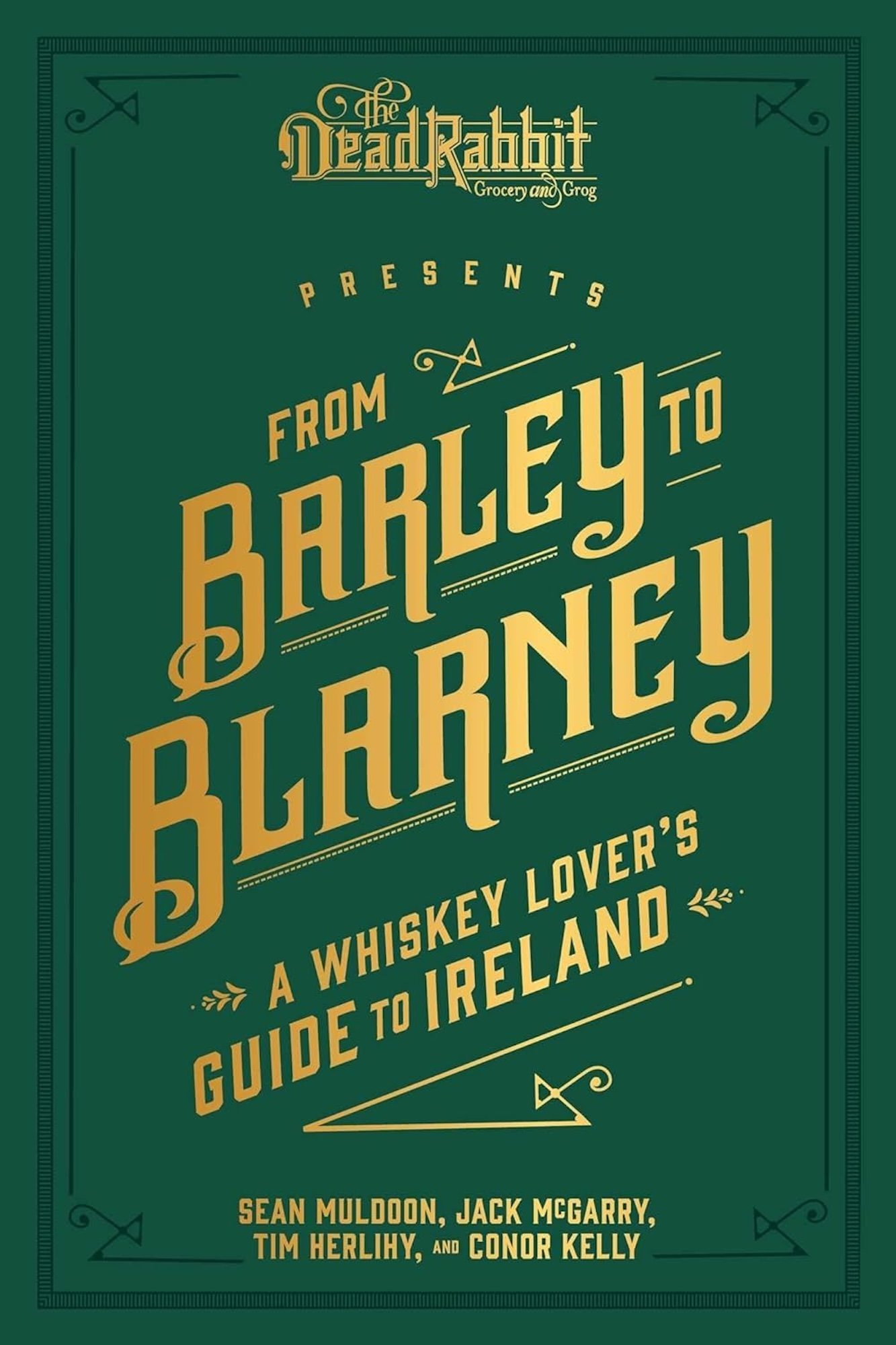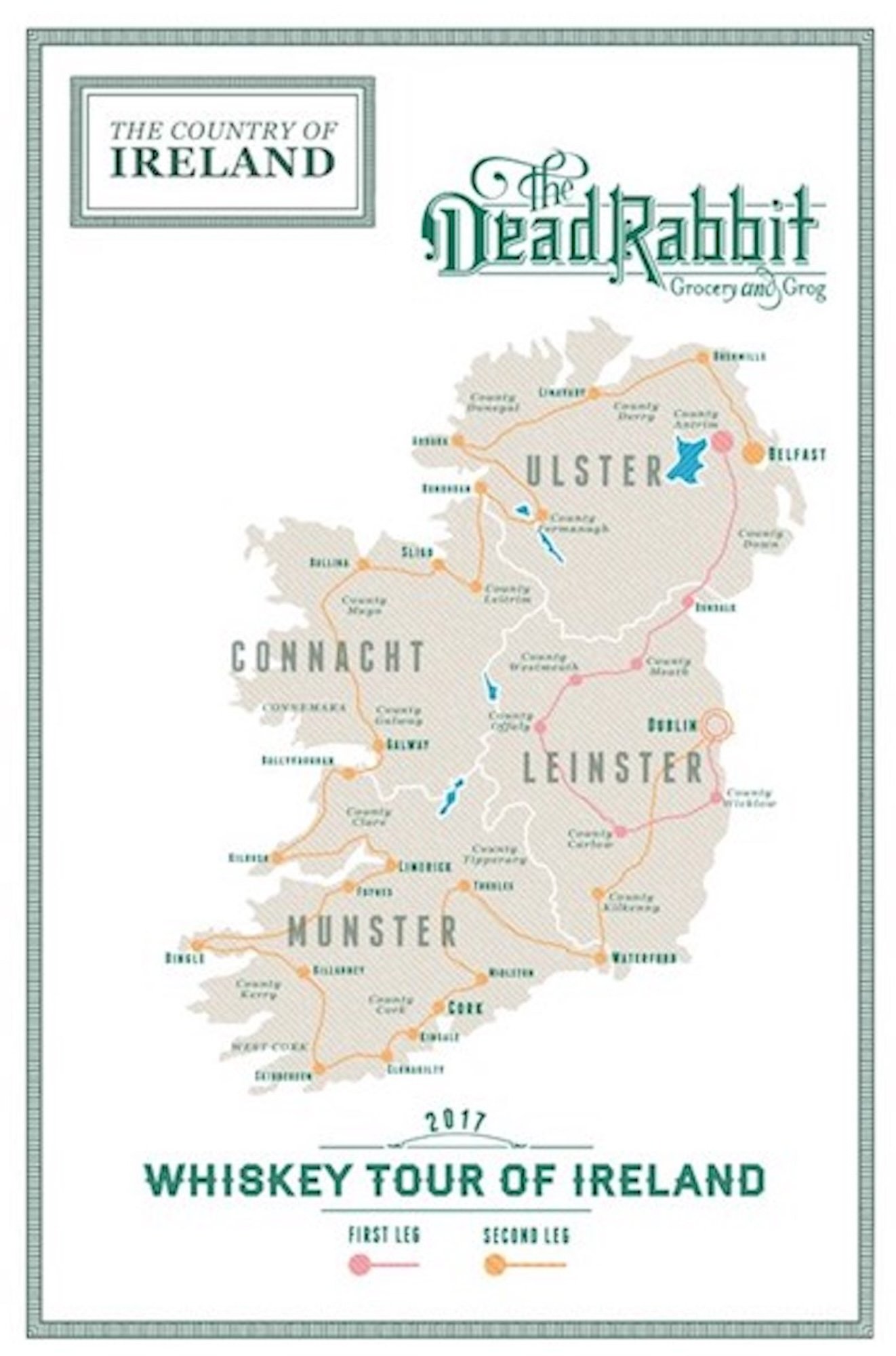Boozy Book Review: From Barley to Blarney, A Whiskey Lover’s Guide to Ireland
From Barley to Blarney, A Whiskey Lover’s Guide to Ireland
“The title of this book has a double meaning,” begins From Barley to Blarney, A Whiskey Lover’s Guide to Ireland, a critical exploration of the modern Irish whiskey landscape. Published in 2019, it remains the most thorough text devoted to uisce beatha, from which the word whiskey itself comes, meaning “water of life.” Penned by The Dead Rabbit founders Sean Muldoon and Jack McGarry, along with distillery expert Tim Herlihy and writer Connor Kelly, it continues: “it is a book for whiskey lovers and by whiskey lovers.”
The very first sentence of the text is expressed with total sincerity and without a trace of sarcasm and Irish cheek. Or is it? But what good is any discussion of Irish whiskey without a strong dose of craic, I say, and this book has loads of it. Its co-authors toured Ireland extensively in order to write it, actually visiting all of the listed distilleries and bars, and it’s more than clear that a good time was had by all, which, given the topic, would seem to be the point.
Consider the early historical and technical material, beginning with A Distilled History of Distillation: “1405: In the Annals of Clonmacnoise, the earliest written Irish record of of whiskey attributes the demise of a chieftain to ‘taking a surfeit of aqua vitae (uisce beatha)’ at Christmas. Death by water of life: also the earliest known example of Irish irony.”
And the humor never lets up, even into the glossary. (Yes, I checked.) The term “anadipsia” is included, and thus defined: “A ten-dollar word—meaning excessive thirst—that doesn’t actually feature anywhere in this book, other than here. And yet somehow, it pervades every page.”
A Necessary Manual
Sean Muldoon and Jack McGarry
But the book takes itself quite seriously too, since it has important work to do. As the first book to catalogue Ireland’s distilleries, it would seem that 2019 is quite late, but that’s also the point. American prohibition decimated the Irish whiskey industry in the early 20th century, reducing the number of working distillers to only four throughout much of the remaining century. Without the Irish immigrant consumption across the sea, for many distillers working in Ireland in the early 1900s, Irish whiskey became unprofitable literally overnight. (The U.S. remains Irish whiskey’s biggest market.)
The first independent new distillery to open in Ireland post-prohibition wasn’t until 1989, when John Teeling would begin Cooley Distillery in County Leith. (Teeling Distillery in Dublin City both is and is not related.) The number of distilleries in Ireland went from only four to over 40 in the last 15 years. It is one of the largest growth spirit types in the U.S. market. The distilleries profiled in “From Barley to Blarney” represent the heaviest hitters, who’ve made a tremendous impact on what is now a thriving, high-growth industry.
Distillery Overview
The bulk of the text is devoted to the distilleries themselves, going province by province, with Dublin City getting its own additional section, to highlight the makers, facilities, and, of course, whiskies of each. Appealing to both technical whiskey fanatics and the merely Ireland-curious, each distillery chapter is structured to tell a vivid story, as well as delineate the technical details behind each of their operations in “At a Glance” and “Key Bottlings” sections. Noting whether each distillery has a visitor center or offers tours, the book also acts as a bit of a useful travel guide for those looking to explore on the ground.
A nod to the excellent research and narrative of the book, each distillery profile manages to highlight something unique or historically important about each one. Kilbeggan is Ireland’s oldest licensed distillery, Great Northern Distillery is the largest independent, and Slane is located on a castle estate and the first to close in on being a near zero-waste facility, representing both historical and contemporary concerns. The breadth of the industry is such that each of the 20-plus distilleries has something notable to comment on, that sets it apart. Expect also to see texture on the most famous brands such as Jameson and Tullamore.
Great Pubs of Ireland
Dead Rabbit Whiskey Tour of Ireland Map
Long before it was possible to visit the distillery of even such mega brands as Jameson, there were pubs, and so it is fitting that the book also catalogs the most important drinking holes in each province. “There are many imitation Irish pubs in this world, all leprechauns and diddly-dee, but there’s no mistaking the real thing when you find it,” the book suggests. While this passage is specific to one of the pubs highlighted in the book, (Nancy’s of County Donegal) it’s highly applicable to any of the stalwart drinking institutions outlined here. Whether or not you care about distillery culture, or the technical details of Irish whiskey, there’s a handy argument to the book being equally valuable for this pub exploration alone. Like an Irish novel, the cast of characters in these sections is memorable, and the storytelling here is at its finest, which is fitting, if you’ve ever spent five minutes in an Irish pub next to an old-timer who understands that proper pub culture is very much about the yarn.
It’s the pubs that contain some of Irish whiskey’s most colorful history. Having wandered into one accidentally once, I’m personally obsessed by the occasional presence of the “spirit grocer,” a throwback to a bygone age where the pub was also the place to buy food, sundries, and may have also been the post office. “From Barley to Blarney,” points them out so you don’t have to go the lucky route as I did. Each pub included gets the full narrative treatment, and like the distilleries, there’s something unique to recommend every one. Consider as an example “Shoot the Crows”— a bar purportedly named for a moment in Sligo’s history when crows were such a crop nuisance that a few dead ones were valid currency to exchange for a pint or two.




